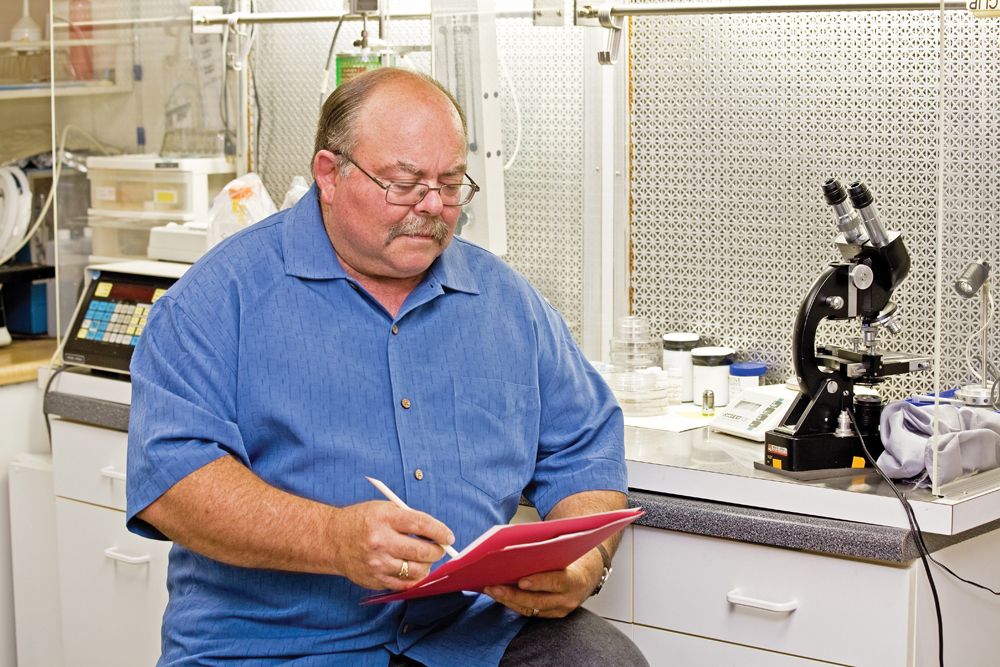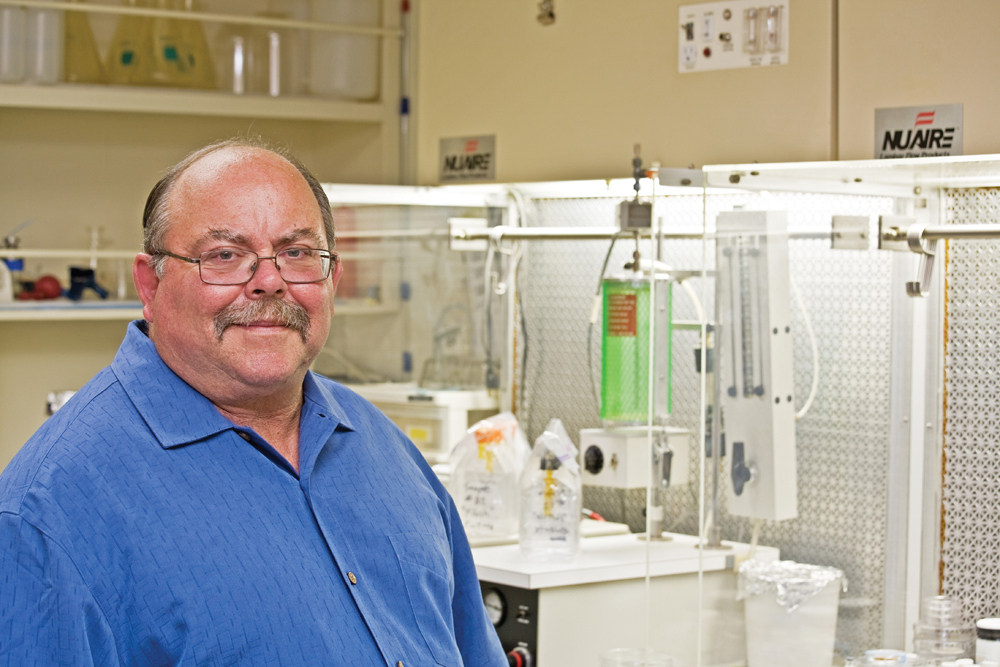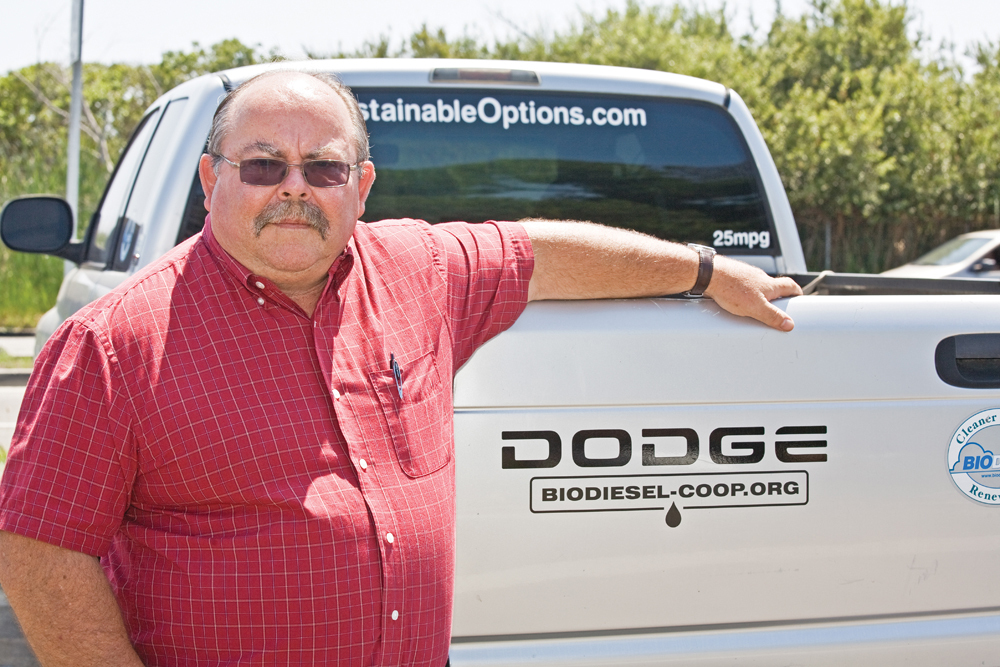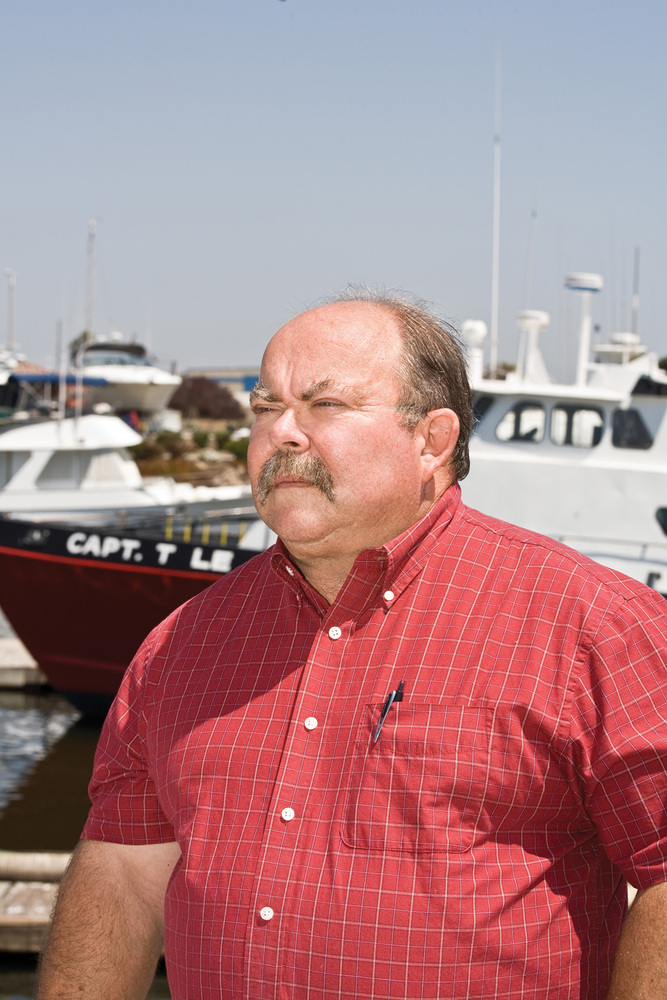Bullish on Biodiesel Quality





BY WAYNE SMITH
September 10, 2012
BY Ron Kotrba
Kent Bullard wears many hats, but in this industry of biodiesel he is commonly referred to as the longest-serving auditor for the BQ-9000 quality assurance program. Bullard says he was raised with a respect for the environment while growing up in several Western National Parks, as his father was a park ranger. After graduating from high school, he served three years in the U.S. Army as an electrician. Afterwards, his federal career of nearly four decades began with a seasonal position in northern California, a career appointment in Montana and then he transferred to Rocky Mount National Park in Colorado. After a couple of years, while faced with another winter of shoveling snow at 8,000-feet, Bullard opted for a transfer to an island off the coast of southern California at Channel Islands National Park. Once there, he was also able to complete his bachelor’s degree in occupational education from Southern Illinois University, Port Hueneme, Calif.
“Working on islands tends to get one in tune with conservation, renewable energy and doing the right thing,” Bullard tells Biodiesel Magazine. Since the early 1980s, Bullard has been involved with installing more than 50 photovoltaic installations in Channel Islands National Park and, as a result, received an individual Federal Energy Management Award in recognition for his work.
Advertisement
Bullard’s decision for graduate school with a concentration in quality management was, as he says, “a harmonious blend of local school availability and a desire to do things better.” While working full-time, he completed his master’s in Quality Assurance from California State University in Dominguez, Calif.
Q: How and when did you first get involved in biodiesel?
A: In 1996, I read an article in “Solar Today” about the Sunrider’s trip around the world using biodiesel. A light went off. Since 1997, I’ve had a bottle of biodiesel setting on my desk. In 1998, while attending a Green Energy Parks workshop, I proposed the utilization of biodiesel for the National Park Service that resulted in a pilot project with 23 parks across the country starting on biodiesel in 2000. Channel Islands’ involvement in the project was to run a 56-foot research vessel and Anacapa Island on B100, making it petroleum-free in conjunction with solar. Being an advocate also involves “walking the talk,” so it is for that same reason that I chose to live in a 100 percent solar-powered home. I bought a 1984 Mercedes 300D and began running B100. My fleet eventually included a Volkswagen Golf and Dodge 2500, both also running on B100. My efforts in the utilization and promotion of biodiesel resulted in my receiving the first Eye on Biodiesel Award for Inspiration and a second Federal Energy Management Award.
Q: You are often recognized as the longest-serving BQ-9000 auditor, but you do much more than that. What other employment do you hold, and what additional biodiesel-related ventures are you involved in?
A: I performed my first BQ-9000 audit in August 2005, and since that date I have audited producers, marketers and laboratories across the country and Canada. In addition, I have provided BQ-9000 training at various regional and international venues. Also in 2005, I co-founded the Los Angeles Biodiesel Cooperative to provide B100 to dedicated users. I have served on the board of directors of the Sustainable Biodiesel Alliance since 2007. I founded the Southern California Biodiesel Users Group in response to California Division of Measurement Standards requirements for the purchase of blends higher than B20 in the state. Currently, membership in the Los Angeles Biodiesel Cooperative stands at around 4,500. For the past two years, I have worked with Lee Enterprises as the team’s BQ-9000 consultant and quality assurance specialist. This January, I retired from the National Park service after 36 years of federal service.
Q: You not only work with renewable energy such as biodiesel, but you also live your life that way. Could you share your view on sustainability and what you do in your personal life to be so?
I gave a PowerPoint presentation in San Diego in 2005. I was able to present just prior to Tad Patzek (of the infamous Cornell/Berkley Report). Now, granted some things have changed since then, but my philosophy on sustainability shows through. Sustainability is about leaving this earth to future generations in as good or better condition as when we took responsibility. It's about living within the limits of the earth as we limit our utilization of finite resources. Think of the earth as an island with limited resources. Sustainability is adapting our needs to fit the environment with the minimum impact, and not using it all for ourselves. It’s leaving the next generation the ability to live a quality life. Sustainability is about making educated choices regarding our use of energy resources. Biodiesel is one fuel option we have that reduces our impacts on finite resources. My home is powered 100 percent by solar electricity, which also has provided the power to run our 100 percent electric Nissan Leaf for more than 10,000 miles in the past year. Water conservation at my home includes dual-flush toilets, drip irrigation, rainwater collection and short showers. I have served as a member of the board of directors for the Sustainability Council of Ventura County since 1997. Projects I have led include forming the Green Building coalition of Ventura County and serving as the chairman of the Green Team for Habitat for Humanity of Ventura County.
Q: Take me through a day in your working life―what is your typical day like?
A: Retirement is good. It allows me time to do some household chores. My auditing duties are part time, so there is a mix of dealing with existing clients in closing audits, clarifying positions and answering questions throughout the month. I also have new audits that require thorough document review and a desk audit prior to performing the on-site registration audit. As a one-person shop, I also am a travel agent, accountant and administrative clerk in completing monthly reports. In performing registration and surveillance audits, I travel to the organization’s location and spend one to two days on site performing the audit and then travel back home. Once any audit findings are closed, I complete a final audit report for the National Biodiesel Accreditation Commission’s approval.
Q: For those who don’t know, please briefly describe the BQ-9000 program. How has it changed over the years, and why?
A: The BQ-9000 program is a Quality Assurance Program based on process control. It is modeled after ISO 9000. The BQ-9000 accreditation is for the organization’s quality assurance program, not the product. Just as ASTM does not certify fuel, nor does BQ-9000. Thus, when you see someone representing to sell “ASTM- and BQ-9000-certified fuel,” you will know that they are unsure of the concept of quality assurance and, as a consumer, you should be unsure about the quality of their product. As with any quality assurance program, change is a good thing as it involves continuous improvement. Since the original BQ-9000 program guidelines were written, change has occurred to redefine the process, clarify requirements, and respond to regulatory change and external requirements such as ASTM.
Q: Could you explain the program differences for producers, marketers and laboratories?
A: There is really very little change between the three program requirements. Remember, this is a program requirement so elements such as record keeping, training, and document control and management responsibility are similar. Operational elements and beyond are specific to the program being audited.
Q: While 80 percent of U.S. biodiesel volume is BQ-9000-certified, only 40 plants hold accreditation, meaning about 160 U.S. plants, mostly smaller producers, do not. Why do you think smaller producers are disinclined to pursue BQ-9000, and what efforts have the organization taken to reverse that trend?
A: Customer demand is key in pushing an organization to seek BQ-9000 accreditation. Scale of operation makes it easier for larger operations to afford the resources to obtain accreditation. Smaller organizations are often on the edge of operational success; fiscal resources are not always available for BQ-9000 registration. That does not mean that they should or do not have a quality assurance program (often modeled on BQ-9000) in place. I as a biodiesel consumer do tend to ask about quality assurance and what’s going on. An answer like occasionally they visually check the fuel for “gickies” is not good enough. I want some program elements in place, something as simple as a quality manual, for instance. I may not have many options of my fuel source, but I do have the final say. The BQ-9000 program is self-supporting and costs are kept low. Program costs primarily are to cover the auditor’s travel and time. There is really no way to have a blue-light special on quality.
Q: What all does a BQ-9000 audit entail?
A: An audit begins with the organization developing a quality program that meets the specific BQ-9000 program requirements. The BQ-9000 accreditation lasts three years. After the initial accreditation audit, organizations are required to perform annual internal audits, and they are also subject to surveillance audits annually by the BQ-9000 auditor. Essentially a surveillance audit is not a full bore audit, but the auditor still goes through the checklist and records. When I come to perform a surveillance audit, I review their internal report and review any corrective actions and the minutes of the report. I also recommend that the organization does its internal audits six months out from the surveillance audit. For example, if an organization has their first audit in August, they will be subject to a surveillance audit the following August. But I recommend that in February they complete their internal audit so when I come again in August, they didn’t just complete their internal audit a few weeks prior.
Q: How often does an audit turn up program infractions?
A: To maintain impartiality, auditors do not see others auditors’ work. Thus, any answers I give in this area are based on my biased views. I do know that auditors can interpret things differently. Also, it is the auditor’s job to verify compliance with program requirements, not to find program infractions. When noncompliance items are found, corrective action is implemented and the audit cannot be closed until all items are closed.
Q: What are the most commonly seen noncompliance issues?
A: They usually pertain to record maintenance and semantics with program requirements.
Q: What are the typical remedies to those?
A: Editing corrections and organizational change.
Q: Of the three categories, which (producer, marketer, lab) yields more noncompliance?
It is pretty much the same, but it varies with the organization’s quality background.
Q: Biodiesel fuel quality has improved greatly over the years, what do you attribute this to?
A: The quality of biodiesel has improved as specifications have evolved to address individual items, such as the need to address sulfur content and metals in the fuel, which has helped build OEM acceptance, or the introduction of the cold soak filtration test to improve cold weather performance, or the accelerated (three-hour) oxidative stability test to ensure the fuel won’t oxidize too quickly in storage or a vehicle fuel tank. It has taken great work by the ASTM committee and organizations to implement new requirements. What BQ-9000 does is help ensure conformance to the latest standard.
Q: You are a consultant with Lee Enterprises, which merged elements of its RIN verification program (RIN 9000), such as fuel sampling to ensure quality, with Genscape’s NBB-supported RIN Integrity Network, established as one of many programs to provide obligated parties due diligence in RIN purchasing and to help avoid future cases of biodiesel RIN fraud. Could you explain your role under this program arrangement?
A: Although there can be some parallels with recordkeeping and testing, the two programs are different and carry different compliance accreditations. At this time I am not involved in RIN verification programs.
Q: What do you think of the new No.1-B grade of biodiesel that has been under development now for a couple of years, which ASTM just recently sanctioned?
A: The new ASTM specification for No. 1-B biodiesel is important, as with petroleum diesel it addresses fuel utilization in varying climatic conditions.
Q: In your opinion, what are the biggest challenges facing the biodiesel industry today? How might those challenges best be addressed?
A: The biggest challenge for the industry today will be the competition for feedstock. The current drought conditions and low crop yields will make it difficult for row crop feedstock to remain competitive. There will again be a great uproar over food costs, availability and the concept of using crops for fuel. It always will be difficult for biodiesel to chase the swings in petroleum costs.
Q: Where do some of the biggest opportunities in biodiesel still lie?
The RFS requirements will continue to move biofuels into mainstream use. Adding additional feedstock options will make biodiesel and biofuels competitive and acceptable for the consumer.
Author: Ron Kotrba
Editor, Biodiesel Magazine
(701) 738-4942
rkotrba@bbiinternational.com
Advertisement
Upcoming Events





